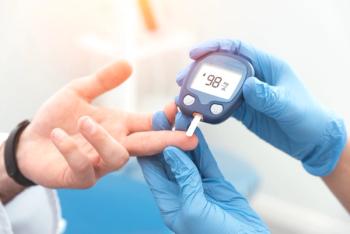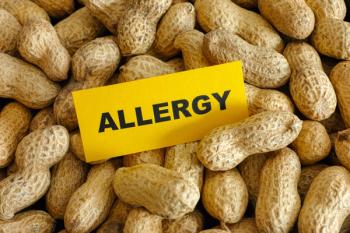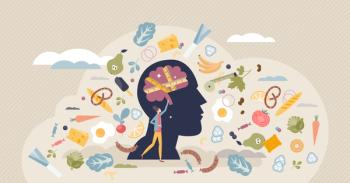
- January/February 2023
- Volume 40
- Issue 01
Help parents navigate food trends and labels
Guidelines provided by the government and nutrition watchdog organizations can help practitioners teach caregivers about wholesome foods for their children.
Picking the healthiest foods for toddlers can be a daunting task for parents. There are seemingly endless options everywhere, from grocery store shelves to social media pages. It is easy for the process to overwhelm busy mothers and fathers who are trying to choose an optimal source of nutrition for picky young eaters.
In a utopian world, families would be able to cook all food for toddlers at home, using natural and nutrition-dense ingredients. They would consistently meet the daily holy grail of 3 to 5 servings of vegetables, 2 to 4 servings of fruits, and 2 to 3 servings of protein, with fiber sprinkled in.1
A former mentor of ours once stated, “Children should eat foods with ingredients their grandmothers would recognize.” But this is reality, and working families oftenturn to ready-made, processed foods. Thus, making healthy choices relies on the ability to read nutrition labels and decipher marketing terms. The parental confusion then carries over to conversations with pediatricians. It becomes a necessity for pediatricians to stay up-to-date with dietary buzz words.
Currently, it does not get trendier than the phrase clean eating.2,3 To emphasize how relevant this phrase is, the search term #cleaneating on Instagram yields nearly 50 million posts. Some say this is mostly marketing, whereas others perceive this as a movement toward natural ingredients. Although there is merit to both claims, it is best that families understand the spectrum, from processed foods to whole foods and clean eating, so they can make their own empowered choices.
Colloquially, the opposite of whole food is processed foods. Let’s start there.
Simply put, processed foods are a byproduct of scientists experimenting with ways to increase shelf life and decrease costs.4 Some of these strategies involve genetically modifying crops and adding fillers, preservatives, and food additives such as trans fats, gums, etc.
Nonetheless, public health experts now have food processing on their radar because of its contribution to chronic diseases. Emphasis is shifting toward the previously overlooked importance of consuming whole foods in their natural, minimally processed form that maintains the original food matrix.5-8 For example, the American Academy of Pediatricsrecently raised the alarm on certain food colorings, flavorings, chemicals, and food contact materials such as adhesives, dyes, and coatings and their relationship to child health.9 If that was not bad enough, consider the risk of food contamination with unsafe levels of heavy metals, pesticides, and nonedible elements that shouldn’t be in food.10,11 A separate program called the Clean Label Project provides certification after verifying certain potentially harmful ingredients are not in a food.12 These ingredients often (but do not always) go hand in hand with the degree of food processing. Clearly, processed foods have a public relations crisis.
However, these foods are affordable and available. Even physicians have memories of subsisting on processed foods during residency; the vending machine dinner is no stranger to medical residents.
A classification system for processed foods was developed in 2019 in collaboration with the United Nations (UN) Food and Agricultural Organization to help identify the degree of impact that various processed foods have on health.13 In general, most processed foods, deemed as ultraprocessed via the UN’s NOVA classification, contribute to food addiction, obesity, diabetes, and other comorbid conditions.14,15
The NOVA classification system can help individuals understand the journey from natural to processed food. There are 4 different categories of foods: unprocessed and minimally processed foods, processed ingredients, processed foods, and ultraprocessed foods.13
Minimally processed foods refer to foods in their most natural form, such as edible plants, animal muscle, algae, cow’s milk, and breast milk.13 Add processed ingredients to a minimally processed food, and voilà, it is a processed food. From here, if you add an additional ingredient such as an emulsification agent or filler to alter palatability, flavor, texture, or shelf life, the food is now classified as ultraprocessed.13 At this point, individuals will see a laundry list of chemical names on packages, with many instinctively questioning a food’s nutritional value and safety.
Media headlines also add to hysteria and mistrust over processed foods, which occupy many fast food establishments. The result is a growing demand for transparency in food ingredients and labeling.
A recent lawsuit against the Subway franchise is a perfect example. Subway claimed they used “100% wild tuna,” whereas media headlines reported their wild tuna was anything but tuna. One outlet even said it contained “chicken, pork, and cattle DNA.”16
From the headlines, one would gather that Subway lied about using real tuna in their sandwiches, based on DNA analyses. This would add to general mistrust of processed foods. However, there is a more nuanced discussion to be had about tuna DNA being denatured during shipping and the impact of mechanically and chemically altering tuna when making tuna salad. The latter involves mechanically agitating the tuna to biochemically blend the protein with a processed ingredient fat source such as mayonnaise.16,17 The mixture of these 2 foods alone is enough to alter protein structure in a way that produces false negative test results when analyzing the presence of tuna DNA in the mixture.16,17
Without digressing further, the lesson is not whether consumers should trust what they are eating from Subway but more an example of how modern manufacturing has set the stage for clean label and clean manufacturing marketing. Parents want to know exactly what they are eating and what they are feeding their children, which can be significantly improved with better label transparency.
Can any food manufacturer say their product is clean?
Clean label was originally coined as an informal term to describe simplicity of ingredients on a food label, whereas clean manufacturing refers to the sustainability of the processes used to manufacture the ingredient or product.2,3 Currently, the US Food and Drug Administration (FDA)18 does not have a standard definition of clean, although the qualification for natural comes close:
A product labeled “natural” is a product containing no artificial ingredient or added color and is only minimally processed. Minimal processing means that the product was processed in a manner that does not fundamentally alter the product. The label must include a statement explaining the meaning of the term natural (such as “no artificial ingredients; minimally processed”).19
The difference between clean eating and clean label certification
The Clean Label Project,12 a national nonprofit organization with the goal of improving transparency in food labeling, took this a step further and added a certification obtained by screening for the absence of microcontamination that can occur during the manufacturing process of a food. The Clean Label Project certifications involve sampling, testing, analysis, and a plan for ongoing compliance.
The Clean Label Project also has the goal of minimizing avoidable levels of contamination. In contrast, the FDA10 sets action levels based on individual food ingredients and unavoidable contamination rather than what a reasonable individual would consider safe or permissible levels. Parents should be aware of potential compounding adverse effects of unavoidable contamination on developmental outcomes for their young children in both manufactured and homemade foods.
It should not surprise any pediatrician if a parent loses trust with these standards and instead follows the natural, clean eating trends. Most importantly, pediatricians need to spread awareness and teach parents what these different terms mean (Table 118-22).
Meet families where they are
Parents need to understand that terms and claims by themselves do not equal health. Although there is substantial evidence that ultraprocessed foods may increase the risk of multiple health conditions,12-14 all-natural and organic foods can still be loaded with sugar. “Number 1 pediatrician recommended” is a vague claim, and clean labels, without any US Department of Agriculture (USDA) and/or FDA regulation, say nothing about nutrition density.
Parents should also be aware that certain terms, such as organic, can affect the nutritional content of food. For instance, early requirements for deeming a food organic did not allow for fortification of certain essential nutrients that have become standard for food groups (eg, bread enriched with B vitamins or cow’s milk fortified with vitamin D).20 Because of concerns for the reemergence of rare vitamin deficiencies, governance reassessed the FDA’s definitions of various food categories, allowing up to 5% of ingredients in a product to be nonorganic and still bear the USDA organic seal.20 Despite some criticism, this action was important to promote adequate public health and nutrition information, especially for the pediatric population. With such regulatory change, infant and toddler products can now be fortified with appropriate micronutrient levels but still meet the goals of some parents seeking to provide organic or non–genetically modified organism (GMO) foods in their child’s diet.
With any conversation about nutrition, it is important to understand how spiritual, religious, socioeconomic, and cultural factors influence food choices. Someone who follows a plant-based diet may be concerned with animal welfare. Someone who tries clean eating may be concerned about the processes involved in manufacturing foods, whereas another person may be avoiding gluten for a medical reason. All 3 diets come with asterisks and specific recommendations to avoid vitamin and nutrient deficiencies. In many cases, a registered dietitian nutritionist is the expert to call.
Translating this information for parents
Not all parents can readily afford organic or all-natural foods for their children. As mentioned before, cost and convenience are a priority for millions of Americans. Additionally, many working parents cannot afford the time to prepare farm-to-table meals for their children. So how can clinicians provide practical guidance?
All parents should be empowered to move beyond the labels and understand the importance of macronutrients and vitamins. Families should be taught to research products, look up nutritional content and ingredients, and see whether food products live up to the hype. Here are some practical tips clinicians can relay to parents:
- Look for products based on whole food ingredients, often listed on their labels, specifically food ingredients that are recognized as conventional foods (Table 118-22).
- Look for products that have been certified by a third party requiring strict, evidence-based standards (eg, Clean Label Project certification) (Table 212,20,22-25).
- If you cannot purchase foods that have been tested for minimal contamination with heavy metals using standards such as those in the Clean Label Project (Table 212,20,22-25), use a variety of brands/sources to minimize cumulative exposure or reduce use of foods known to be at high risk for contamination21 such as the following:
- crisped or puffed rice products, brown rice, and rice cereal;
- fresh carrots;
- fresh sweet potatoes; and
- spinach (rotate with other greens, choose baby spinach).
- If you cannot purchase foods that have been tested by third parties for minimal GMO exposure using standards such as those in The Non-GMO Project (Table 212,20,22-25), minimize intake of foods with multiple ingredients likely to be derived from high-risk GMOs26 such as the following:
- aspartame,
- sodium citrate,
- artificial flavorings,
- high-fructose corn syrup,
- lactic acid,
- corn maltodextrin,
- monosodium glutamate,
- textured vegetable protein, and
- xanthan gum.
In summary, a product can be unprocessed but full of pesticides or heavy metals, or it can be heavily processed but organic and clean. Parents can take multiple yellow brick roads toward clean and wholesome nutrition for their children. Clinicians must be willing to use a family-centered approach. It is important to determine what factors affect their food choices and use this information to steer clinical guidance and nutrition education. Understanding the science behind the jargon is just the starting point for pediatricians to point parents in the direction of an individualized path that can contribute to better health and development.
Term or phrase
Food label regulation summary
Examples or interpretation
Organic
Must meet both USDA regulation for claim and FDA food label regulation:
- Not produced using ionizing radiation, sewage sludge, prohibited methods, or processing aids
- No sulfites, nitrates, or nitrites
- No synthetic substances/ingredients unless specific conditions are met (eg, GRAS status, maintains nutritional quality of food, no adverse human health effects)
Dependent on the category:
- 100% organic: 100% organic ingredients or 100% organic produce/meat
- Organic: minimum of 95% organic ingredients
- Made with organic ____ (may state up to 3 ingredients): minimum of 70% organic ingredients
- Organic ingredients: less than 70% organic ingredients (may designate via ingredient list on food label but not required to do so)
Natural
Has no regulation but has general FDA guidance:
- Nothing artificial or synthetic included or added to a food that would not normally be expected to be in that food
Typically interpreted consistent with FDA:
- Natural applesauce (ie, only ingredient listed is pureed apples)
- Natural almond butter (ie, only ingredient listed is crushed almonds)
Sometimes used in misleading context such as description of food with minimal ingredients or processing
Healthy
Must meet 1 FDA food label regulation:
- Fat profile that is predominantly monounsaturated and polyunsaturated fats
- Contains at least 10% DV per RACC of potassium or vitamin D
Should specify amount of nutrient:
- Contains 2.5 μg Vitamin D per serving
- Contains 500 mg potassium per serving
Plant-based
No regulation
Typically interpreted as no animal derivatives
Sometimes used in misleading context (eg, vegetarian products derived from animals such as dairy products)
Vegan
No regulation
Typically interpreted as no animal derivatives (eg, milk, honey, meat, fish, eggs)
No antibiotics or no GMOs
No regulation but has general USDA definitions of agricultural aids that may adversely affect human health
Typically interpreted as food or ingredients sourced from humane agriculture conditions and more natural conditions
Clean
No regulation
Typically interpreted as natural or emphasizing the simplicity of product or ingredients
Whole grain
No regulation but has general FDA interpretation:
- Cereal grains or pseudograins with intact, ground, cracked, or flaked caryopsis
- Anatomical components (endosperm, germ, bran) present in same relative proportion as intact form
Not often understood by individuals, but typically interpreted as healthier:
- Whole grain oats
- Whole grain buckwheat flour
Sometimes misinterpreted by consumers depending on context:
- Ultraprocessed frozen pizza labeled with “whole wheat crust”
Whole
Has general FDA guidance when referring to physical form of food:
- Should specify physical form of the conventional food or ingredient if relevant
Whole almonds (compared to sliced or chopped), whole grain
DV, daily value; FDA, US Food and Drug Administration; GMO, genetically modified organism; GRAS; generally recognized as safe; RACC, reference amount customarily consumed; USDA, US Department of Agriculture.
Label term
Oversight organization
Oversight category
Summary of requirements
Reference website
Certified Non-GMO
The Non-GMO Project
Nonprofit organization
Tested by third-party to verify minimal GMO risk ingredients, where GMOs are plants, animals, or microorganisms with laboratory-modified genetic makeup through use of genetic engineering or transgenic technology
https://nongmoproject.org
Clean Label Project Certified
Clean Label Project
Nonprofit organization
Tested by third party via ISO-accredited analytical chemistry partner laboratories to verify minimal detectable amounts of over 400 impurities such as pesticides, plasticizers, and heavy metals
https://cleanlabelproject.org
Certified USDA Organic
USDA National Organic Program
Government
Must be organic or 100% organic
https://usda.gov/topics/organic
Certified Plant Based
Plant Based Foods Association (trade association)
Industry organization
- Raw foods, dietary supplements, or animal-derived ingredients ineligible
- Synthetically derived ingredients (eg, chemical or enzyme synthesis) and fillers allowed if under 10% of product
https://plantbasedfoods.org
Vegan certified
BeVeg Vegan (certification company)
ISO-accredited industry organization
- No animal-derived ingredients (eg, lactose, honey), genes, molecules, or cross-contamination with such during production
- No animal testing (eg, US infant formula ineligible because of FDA testing requirements)
- Must be cruelty free
https://beveg.com
NSF Raised Without Antibiotics certified
NSF International
Nonprofit organization
- Addresses humane handling or raising of animals and contribution of antibiotics to the rise of superbug infectious bacteria
- Encompasses USDA-regulated products: meat, poultry, seafood, fish, dairy, and eggs
https://nsf.org
FDA, US Food and Drug Administration; GMO, genetically modified organism; ISO, International Organization for Standardization; NSF, National Sanitation Foundation; USDA, US Department of Agriculture.
- Dietary guidelines for Americans 2020-2025. US Department of Agriculture and US Department of Health & Human Services. December 2020. Accessed August 21, 2022. https://www.dietaryguidelines.gov/sites/default/files/2020-12/Dietary_Guidelines_for_Americans_2020-2025.pdf
- Asioli D, Aschemann-Witzel J, Caputo V, et al. Making sense of the “clean label” trends: a review of consumer food choice behavior and discussion of industry implications. Food Res Int. 2017;99:58-71. doi:10.1016/j.foodres.2017.07.022
- Negowetti N, Ambwani S, Karr S, Rodgers RF, Austin SB. Digging up the dirt on “clean” dietary labels: public health considerations and opportunities for increased federal oversight. Int J Eat Disord. 2022;55(1):39-48. doi:10.1002/eat.23585
- Labuza TP, Breene WM. Applications of “active packaging” for improvement of shelf‐life and nutritional quality of fresh and extended shelf‐life foods. J Food Process Preserv. 1989;13(1):1-69. doi:10.1111/j.1745-4549.1989.tb00090.x
- Turgeon SL, Rioux LE. Food matrix impact on macronutrients nutritional properties. Food Hydrocoll. 2011;25(8):1915-1924. doi:10.1016/j.foodhyd.2011.02.026
- Thomas G, Kalla AM, Rajunaik B, Kumar A. Food matrix: a new tool to enhance nutritional quality of food.J Pharmacogn Phytochem. 2018;7(6):1011-1014.
- Foegeding EA, Plundrich N, Schneider M, Campbell C, Lila MA. Protein-polyphenol particles for delivering structural and health functionality. Food Hydrocoll. 2017;72:163-173. doi:10.1016/j.foodhyd.2017.05.024
- Aguilera JM. The food matrix: implications in processing, nutrition and health. Crit Rev Food Sci Nutr. 2019;59(22):3612-3629. doi:10.1080/10408398.2018.1502743
- Trasande L, Shaffer RM, Sathyanarayana S; Council on Environmental Health. Food additives and child health. Pediatrics. 2018;142(2): e20181408. doi:10.1542/peds.2018-1408
- Center for Food Safety and Applied Nutrition. Guidance for Industry: Action Levels for Poisonous or Deleterious Substances in Human Food and Animal Feed. FDA; 2000. Docket No. FDA-2020-D-1956. Accessed August 29, 2022.
https://www.fda.gov/regulatory-information/search-fda-guidance-documents/guidance-industry-action-levels-poisonous-or-deleterious-substances-human-food-and-animal-feed - Bair EC. A narrative review of toxic heavy metal content of infant and toddler foods and evaluation of United States policy. Front Nutr. 2022;9:919913. doi:10.3389/fnut.2022.919913
- The consumer standard for food and consumer product quality and safety. Clean Label Project. Accessed August 21, 2022.
https://cleanlabelproject.org/ - Monteiro CA, Cannon G, Lawrence M, da Costa Louzada ML, Pereira Machado P. Ultraprocessed Foods, Diet Quality, and Health Using the NOVA Classification System. Food and Agriculture Organization of the United Nations; 2019. Accessed January 3, 2023. https://www.fao.org/3/ca5644en/ca5644en.pdf
- Monteiro CA, Cannon G, Moubarac JC, Levy RB, Louzada MLC, Jaime PC. The UN decade of nutrition, the NOVA food classification and the trouble with ultra-processing. Public Health Nutr. 2018;21(1):5-17. doi:10.1017/S1368980017000234
- Popkin BM, Barquera S, Corvalan C, et al. Towards unified and impactful policies to reduce ultraprocessed food consumption and promote healthier eating. Lancet Diabetes Endocrinol. 2021;9(7):462-470. doi:10.1016/S2213-8587(21)00078-4
- Subway tuna is real tuna. Subway. Accessed June 21, 2022.
https://www.subway.com/en-us/tunafacts - Piskata Z, Pospisilova E, Borilova G. Comparative study of DNA extraction methods from fresh and processed yellowfin tuna muscle tissue. Int J Food Prop. 2017;20(suppl 1):S430-S443. doi:10.1080/10942912.2017.1297953
- Center for Food Safety and Applied Nutrition. Guidance for Industry: Food Labeling Guide. FDA; 1994. Docket No. FDA-2013-S-0610. Accessed September 6, 2022.
https://www.fda.gov/regulatory-information/search-fda-guidance-documents/guidance-industry-food-labeling-guide - Center for Food Safety and Applied Nutrition. Use of the Term “Natural” in the Labeling of Human Food Products. FDA. Docket No. FDA-2014-N-1207. Accessed September 6, 2022.
https://www.regulations.gov/docket/FDA-2014-N-1207 - National Organic Program. US Dept of Agriculture; 2000. 7 CFR Part 205. Accessed January 3, 2023.
https://www.ecfr.gov/current/title-7/subtitle-B/chapter-I/subchapter-M/part-205 - Center for Food Safety and Applied Nutrition. Use of the Term “Healthy” in the Labeling of Human Food Products. FDA. Docket No. FDA-2016-D-2335. Accessed September 6, 2022.
https://www.regulations.gov/docket/FDA-2016-D-2335 - The Non-GMO Project. Accessed September 6, 2022.
https://www.nongmoproject.org/ - Plant Based Foods Association. Accessed September 6, 2022.
https://www.plantbasedfoods.org/ - BeVeg Certified. Accessed September 6, 2022.
https://www.beveg.com/ - Food and beverage product certification. National Sanitation Foundation. Accessed September 6, 2022.
https://www.nsf.org/testing/food/food-beverage-product-certification - Heavy metals in baby food. HealthyChildren.org. Accessed September 7, 2022.
https://www.healthychildren.org/English/ages-stages/baby/feeding-nutrition/Pages/Metals-in-Baby-Food.aspx
Articles in this issue
over 2 years ago
The latest FDA approvals for children’s medicationsover 2 years ago
The rise of the variantsover 2 years ago
Scalp thickening and folding in a pubertal boyalmost 3 years ago
Beating burnoutNewsletter
Access practical, evidence-based guidance to support better care for our youngest patients. Join our email list for the latest clinical updates.














